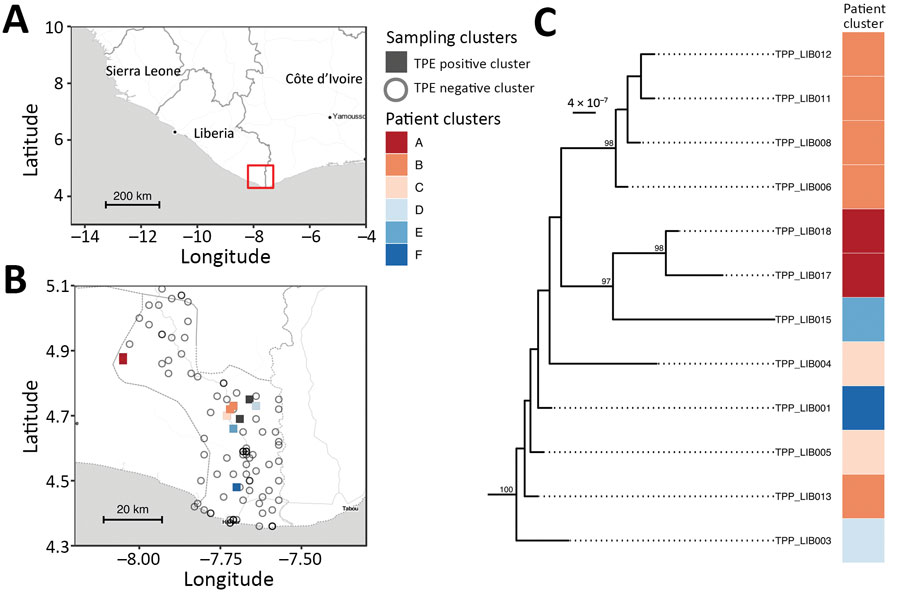Epidemiologic and Genomic Reidentification of Yaws, Liberia
Joseph W.S. Timothy

, Mathew A. Beale, Emerson Rogers, Zeela Zaizay, Katherine E. Halliday, Tarnue Mulbah, Romeo K. Giddings, Stephen L. Walker, Nicholas R. Thomson, Karsor K. Kollie
1, Rachel L. Pullan
1, and Michael Marks
1
Author affiliations: London School of Hygiene and Tropical Medicine, London, UK (J.W.S. Timothy, K.E. Halliday, S.L. Walker, N.R. Thomson, R.L. Pullan, M. Marks); Wellcome Sanger Institute, Hinxton, UK (M.A. Beale, N.R. Thomson); Ministry of Health, Monrovia, Liberia (E. Rogers, Z. Zaizay, T. Mulbah, R.K. Giddings, K.K. Kollie); University College London Hospitals NHS Foundation Trust, London (S.L. Walker, M. Marks)
Main Article
Figure 3

Figure 3. Spatial and phylogenetic distribution of 12 whole genome TPE sequences isolated from serologically confirmed yaws cases in Maryland County, Liberia. Genomes are extremely closely related but show evidence of geographical separation. A) Regional map with study area highlighted in red. B) Maryland County, indicating sampling location of Treponema genome (colored by survey cluster). C) Maximum-likelihood whole genome phylogeny of Liberia genomes, scaled by substitutions per site, showing phylogenetic relationships of patient samples. Ultra-fast bootstrap values >95% are indicated on the tree. Map tiles by Stamen Design (CC-BY 3.0), map data by OpenStreetMap (ODbl). TPE, Treponema pallidum subspecies pertenue.
Main Article
Page created: January 13, 2021
Page updated: March 18, 2021
Page reviewed: March 18, 2021
The conclusions, findings, and opinions expressed by authors contributing to this journal do not necessarily reflect the official position of the U.S. Department of Health and Human Services, the Public Health Service, the Centers for Disease Control and Prevention, or the authors' affiliated institutions. Use of trade names is for identification only and does not imply endorsement by any of the groups named above.
